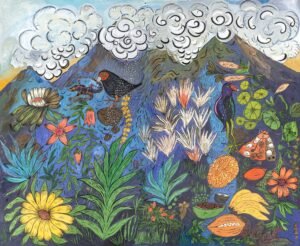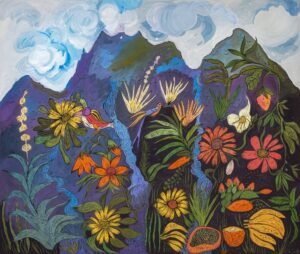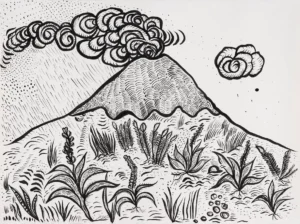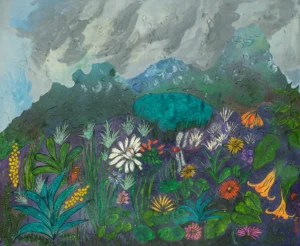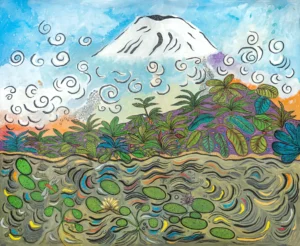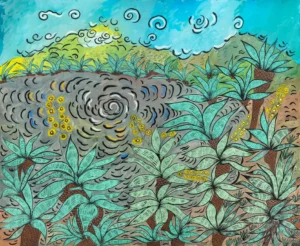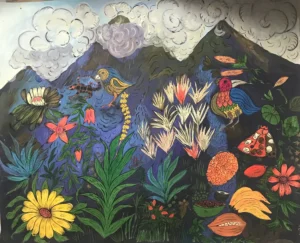“Trance estático” llamó Walter Benjamin a la relación que los antiguos habitantes de la Tierra tenían con el cosmos. Kant llamó “lo sublime” a ese sentimiento de excitación y temor ante los fenómenos naturales, cuando, encontrándonos a salvo, somos capaces de pensar sobre ellos a posteriori. Los pueblos originarios del AbyaYala, perciben como un continuo phusis y cultura. Ese asombro que sentimos al estar expuestos a la formidable fuerza del paisaje andino se hace presente constantemente. Me acerco a esa noción de “lo sublime” y haciendo una “fabulación especulativa” como diría Donna Haraway, asumo la mirada de los antepasados. Así el monte portentoso por encima de nubes y cerros y la ría del manso Guayas a sus faldas se sobreponen al paisaje de casas y edificios de la ciudad; las laderas y quebradas del Pichincha son de nuevo como eran antes de que los humanos las habitemos, las lagunas del Quilotoa y el Antisana prístinas, sin rastro de contaminación visual, auditiva, táctil. ¿Ambientalismo radical? Tal vez, pero también ficción especulativa de un mundo más reducido, más suave, más llevadero para todos los humanos y no humanos. Utópico? Si, absolutamente, posible sin embargo, si nos reducimos, si paramos de crecer como humanidad conscientemente y caminamos hacia una Tierra equitativa, cultivos pequeños, sociedades reducidas, equilibrio de toma y daca de recursos.
Landscapes beyond-the-human.
Walter Benjamin called an “ecstatic trance” the awe that the ancient inhabitants of the Earth experienced when facing the cosmos. Kant called “the sublime” that feeling of excitement and fear in the face of natural phenomena, when, finding ourselves safe, we are able to think about them after the fact. The native peoples of AbyaYala perceive phusis and culture as a continuum. That amazement that we feel when exposed to the formidable force of the Andean landscape is constantly present in the lands of the rectilinear sun. I approach that notion of “the sublime” and I propose a “speculative fabulation” as Donna Haraway would say: I assume the gaze of the ancestors. Thus the portentous mountain above clouds and hills and the gentle Guayas estuary at its skirts, overlap the landscape of houses and buildings of the city; the slopes and ravines of Pichincha are again as they were before humans inhabited them, the Quilotoa and Antisana lagoons are pristine, with no trace of visual, auditory, or tactile contamination. Radical environmentalism? Perhaps, but also speculative fiction of a world that is smaller, softer, more bearable for all humans and non-humans. Utopian? Yes, absolutely. Possible, however, if we reduce ourselves, if we consciously stop growing as humanity and walk towards an equitable Earth, small crops, reduced societies, balance of give and take of resources.
